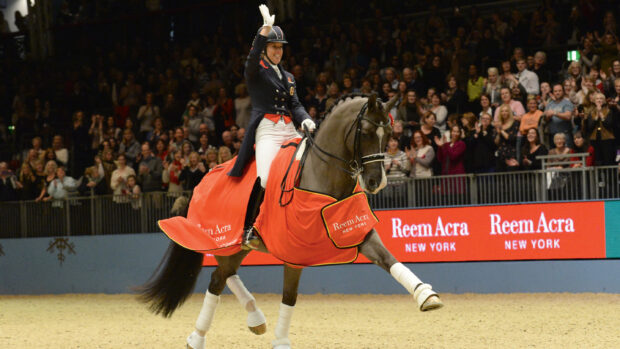1. Relaxation
Your horse must be relaxed and accepting of you – your seat, legs and hand. He must move freely without tension and his back, head and neck should be in a relaxed and unforced position.
2. Impulsion
Impulsion is vital – a light touch from your leg and the horse must increase his pace.
Do not mistake speed for impulsion. A horse moving at maximum speed does not necessarily have impulsion – he will simply get tired. Keep within his individual natural balance and rhythm, and occasionally check his impulsion with some transitions between paces or lengthening in the pace.
3. Asking for bend
A good bend is important so that your horse:
Engage the hindquarters, bringing the inside hind leg underneath his body. This is where control of the quarters is important, as they must stay ‘behind’ the horse, following the line of the circle or bend and not pushing out or falling in.
4. Straightness is vital
A lot of time can be spent riding circles, but a straight horse is just as important. To ride a straight line, you must:
If you find it hard to feel when your horse is crooked, ask someone to stand in front of you and tell you when the quarters or shoulders are to the side, or use a series of markers such as cones to mark a line to ride beside.
5. Maintaining energy
The half-halt is an essential aid for a rider – it helps steady and re-balance the horse, while keeping the energy coming through from the quarters. When applied correctly, you should feel your horse steady himself, keeping the forward activity. The aids are as follows:
This should all happen within a split second and be repeated as often as necessary. Horses will all respond differently, so tailor your aids to suit the responses of your horse, but always use more leg than hand.
6. Avoiding evasions
If your horse pushes his quarters to one side, ensure that you sit straight and use the leg on the same side to push the quarters back underneath you. Be careful not to over-correct so they swing out to the other side.
|




